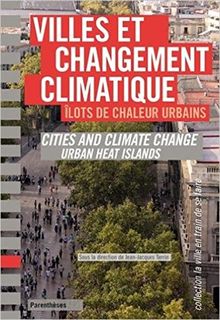
Le réchauffement global de la planète et les dérèglements météorologiques vont croître considérablement d'ici la fin du XXIe siècle. La ville n'échappe pas à l'influence de ces changements climatiques qui engendrent des îlots de chaleur urbains - caractérisés par des hausses de température parfois importantes dans le centre par rapport à la périphérie et qui entraînent dysfonctionnements et inconfort. Ce phénomène est dû à l'accumulation d'un certain nombre de facteurs : la densité urbaine, la circulation automobile, la minéralisation excessive et le déficit de végétal et d'eau dans les espaces publics. Les métropoles tentent d'agir. Dans cet ouvrage, chercheurs, experts et responsables locaux des villes de Barcelone, Lyon, Marseille, Montréal, Nantes, Rennes, Rome, Stuttgart, Toulouse et Vienne analysent l'impact que peuvent avoir les formes architecturales et urbaines, les dispositifs paysagers, ainsi que le choix de matériaux et de technologies de construction sur la réduction des effets néfastes de ces îlots de chaleur.
Global warming and weather disturbances will increase significantly before the end of the 21st century. Cities are also affected by these changes in the climate, which lead to the formation of urban heat islands. This phenomenon is characterised by higher temperatures in the centre of cities (sometimes significantly higher) than on the urban periphery, generating discomfort and urban malfunctions. This phenomenon is due to the accumulation of several factors: urban density, motorised traffic, excessive soil sealing and a lack of vegetation and water in public spaces. Large cities are trying to remedy this problem. In this edition of Popsu, researchers, experts and local authorities from the cities of Barcelona, Lyon, Marseilles, Montreal, Nantes, Rennes, Rome, Stuttgart, Toulouse and Vienna, examine the impact that architectural and urban forms, landscaping devices, and the choice of building materials and technologies can have on reducing the negative effects of urban heat islands.